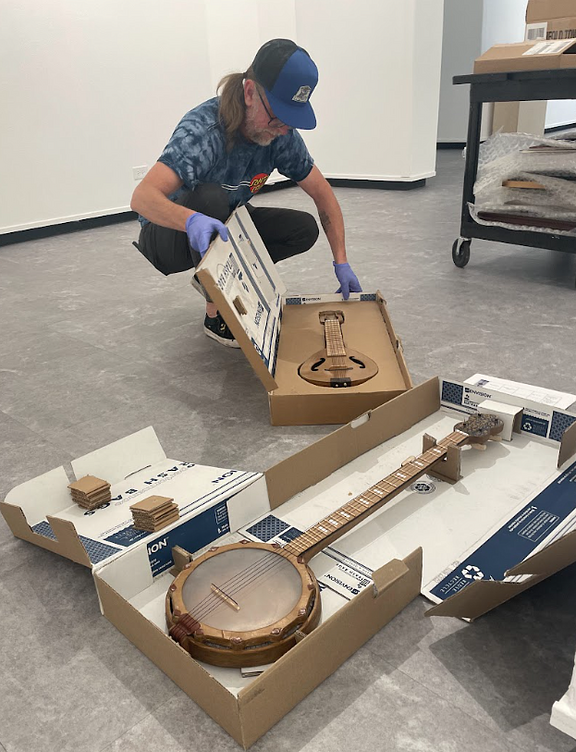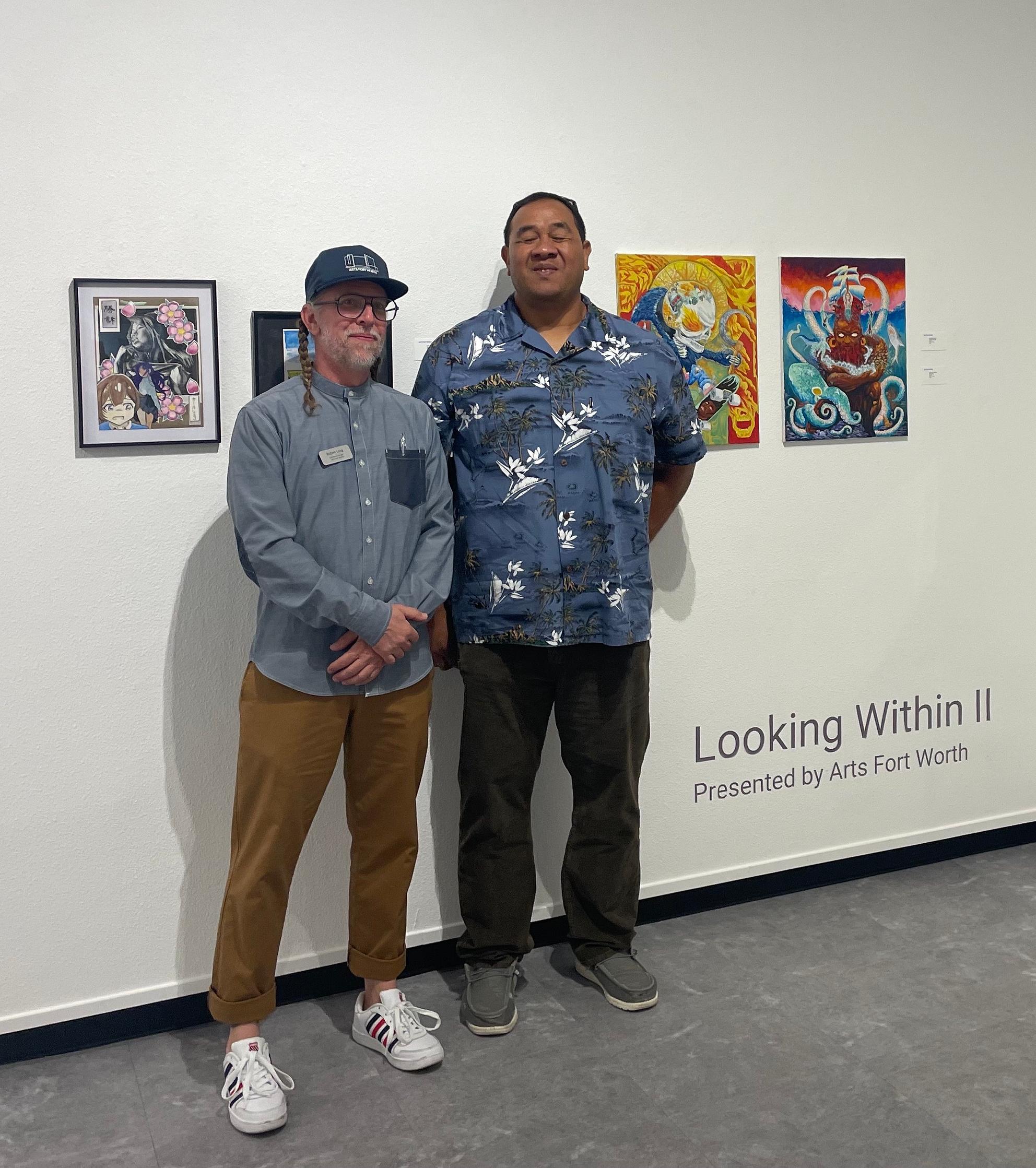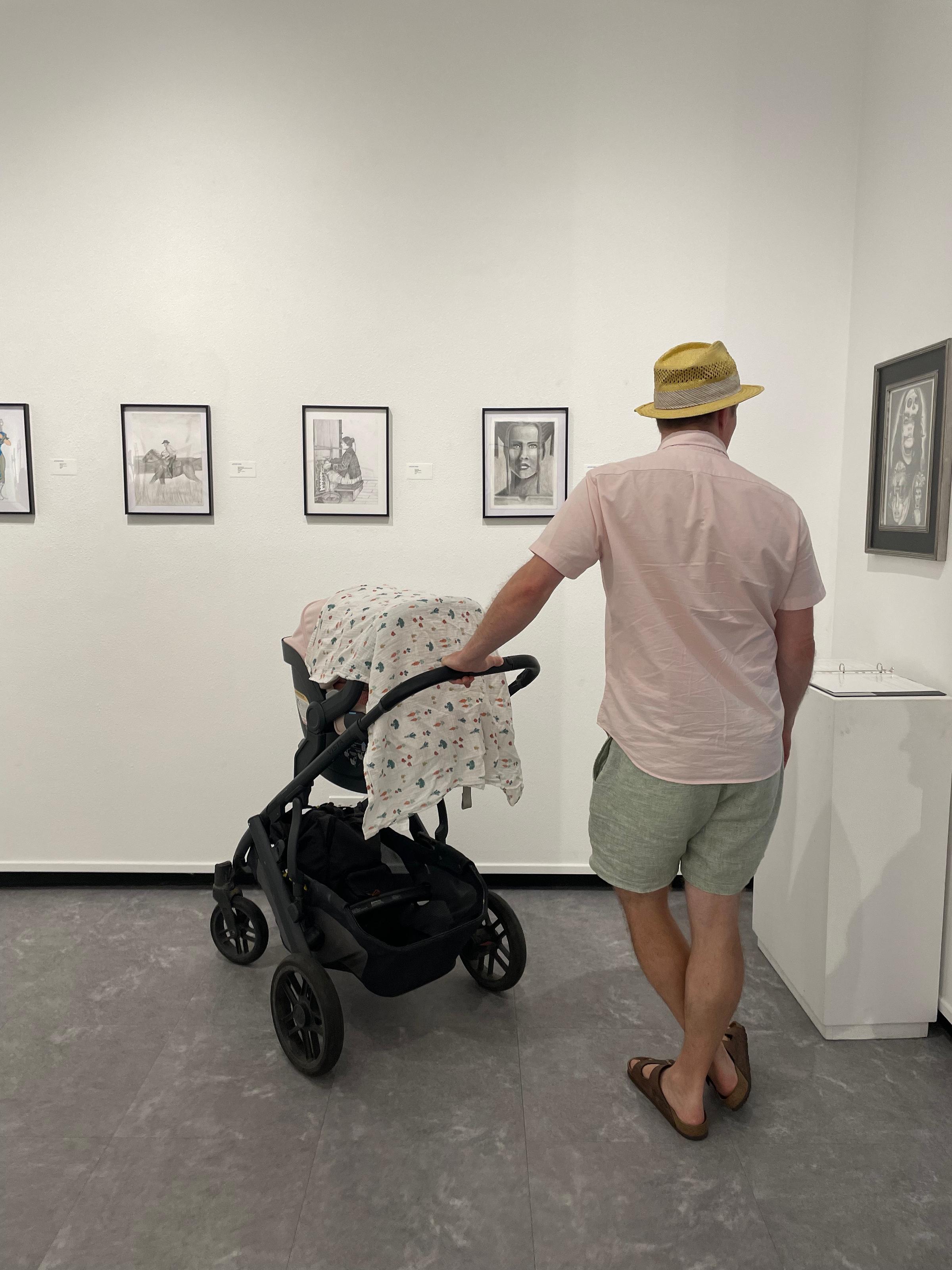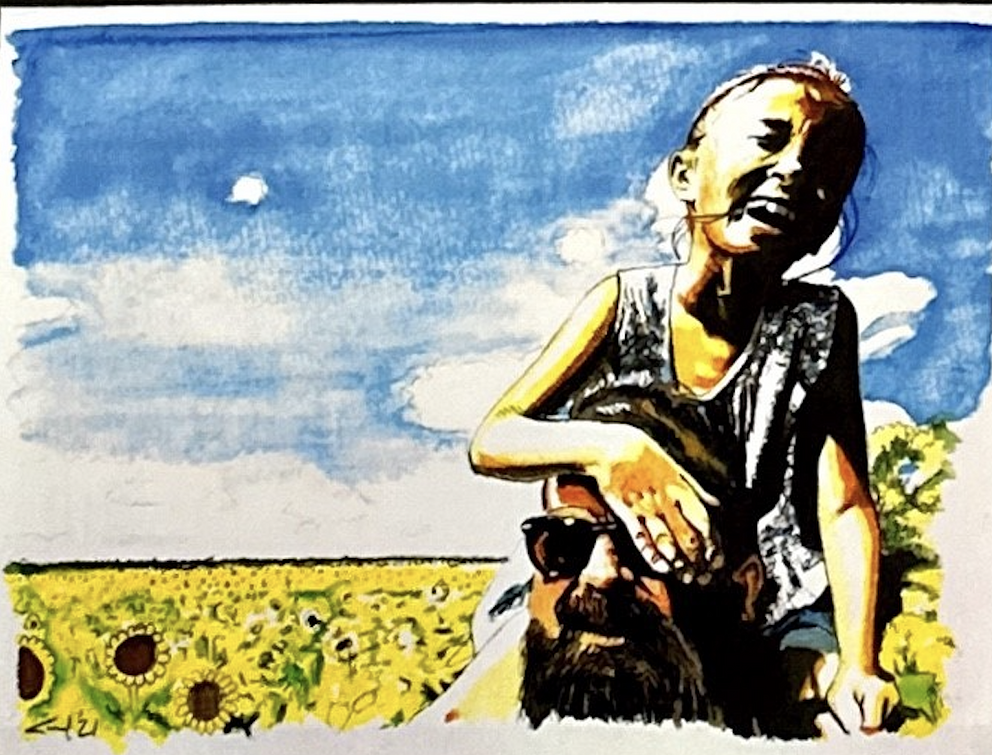Looking Within II
Transystems Corporation Gallery
Fort Worth Community Art Center
1300 Gendy St.,
Fort Worth, Texas
Closed
A collection of paintings, works on paper, sculpture and crafted objects was recently displayed in the Transystems Corporation Gallery at the Fort Worth Community Art Center. Works included graphite drawings, portraiture and sculptures of instruments made of cardboard and dental floss that could have fooled a musician into picking up the sculpture of a banjo and trying to play it.
One work in particular of a brightly colored sunflower field catches the eye. It’s a small work, framed and a man has a child lifted up on his shoulders, the smiles and joy of the pair is palpable. It’s difficult to imagine that this work is the depiction made by a man who is in prison in the Federal Medical Center (FMC) in Fort Worth, Carl Masters. It’s a memory he decided to capture of himself and his daughter while using the Recreation Department’s arts and crafts room in the prison. In fact, the entire exhibition, titled Looking Within II, is work made by inmates in the same prison as Masters.
The work displayed is fascinating in its diversity of subject matter, choices in use of materials and styles. Some of the paintings are traditional abstractions of color and shapes, while other pen and ink drawings have graphic text and characters leaping into the foreground. All in all, the work reflects artists in the prison, their ideas and current skill, and craftsmanship. “Some of the artists came to art making for the first time when they entered the prison system. The work exhibited ranges from new creatives, to work by some who took high school classes, and some of the artists have design degrees and fine art college course work,” says Exhibition Manager Robert Long.
The work in Looking Within II is diverse. James Sparkman’s sculpture, Symphony of Sound (banjo), looks like a life-size, playable banjo. A viewer wouldn’t be able to tell it is constructed from cardboard, watercolor paint, dental floss and pencil without close inspection.

Robert Long had been working as the exhibitions manager for a short time when Warden Freddy Garrido and Officer Anolo Vaitai casually walked into the Fort Worth Community Art Center and struck up a conversation with him in July of 2022. Garrido asked if the Fort Worth Community Arts Center would consider hosting an art exhibition of inmates of the Federal Medical Center (FMC) Fort Worth. Long accepted the invitation to visit with the inmates knowing that undertaking the exhibition was risky for many reasons, including the challenge of presenting the artwork without the stigma of the artists’ being incarcerated.
Long agreed to take on the project, and began his research and work to engage with the Bureau of Prisons. Before the project began Long had always built exhibitions in physical gallery spaces. He had run house galleries and, now, runs seven galleries at the Fort Worth Community Art Center. Warden Freddy Garrido and Officer Anolo Vaitai were asked for comments for this article, however due to regulations, they are not permitted to speak with the press.

At the time of Long’s initial visit in 2022 to the FMC, it was the tail-end of the pandemic. Inmates were sequestered to their cells and their interactions were restricted to suppress the spread of Covid 19. The arts and crafts room had been repurposed as a sickbay for inmates with Covid. Despite all this, inmates were still making art, and Long was determined to help the artists showcase their work.
There were concerns about whether or not the exhibition would see the light of day, simply because taking objects out of the Prison is difficult and generally forbidden. Long became quickly acquainted with how grindingly slow communications and requests move in the Federal Prison System, particularly processes that involve connecting inmates to the outside world. The inmates themselves shared with Long that they didn’t believe the exhibition would ever happen.
“Last year we had 21 artists, all the work was made during the quarantine, and they had limited access to materials. This year has 28 artists represented. It’s also different in that the inmates have full access to the crafts room. The work made for this year’s exhibitions have expanded to include wet media, leather goods, and sculpture,” Long says.







